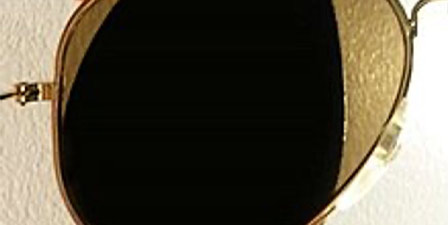I’m not quite done with my Blue-Blocker series yet; I’ve still got at least one more entry to go.
On With The Show
This month I’m taking a look at Zeiss’ DuraVision BlueProtect. In the interest of full disclosure, I didn’t come into this series with an intimate familiarity of Zeiss products; my optometrist when I was in college used them in his office, but I didn’t learn that until years later, and, at the time, I wasn’t a very discerning consumer of lens products. In my optical career, I’ve primarily worked with Essilor and Hoya lenses, in addition to some of the smaller-name companies whom I’ve mentioned from time to time. So, not only was this a test-run of a specific AR for me, it was also me and Zeiss together again for the first time; which is to say, this is probably the only entry in my Blue-Blocking series that features me reviewing a product from a company with which I really have no meaningful prior experience. I neither knew about DuraVision nor had any hands on experience with it before I was offered the opportunity to take a look at it by my wonderful editor, Mindi Lewis, and Zeiss’ own Robert Spirito, who provided me with a pair of lenses with which to conduct research for this article.

Image from the Carl Zeiss Vision, USA website.
Used with permission.
The DuraVision lens is designed for individuals with a high rate of indoor exposure to LEDs, tablets, computers, and televisions. Rather than completely filter blue light, the coating reduces the transmission in the 380–455 nm spectrum, while keeping the transmission level high above 460 nm. Like other modern ARs of comparable function and quality, it’s easily cleaned due to oleophobic/anti-static properties, and also has very high scratch resistance, giving it a little bit of added durability as a selling factor in your office.

Looking through the lens, I’m impressed with the clarity (the AR is available in Trivex, which, of course, is always a plus; as you’ll note from the photo, I test-drove these in a three-piece rimless; the lenses, manufactured by Zeiss, are well made. There’s no color shift, as is necessary with Blu-Tech, or the sensation of “lightening” that I spoke about with the Nassau Lens. As an added cosmetic benefit, there’s also very little residual “yellowizing” when viewed against white surfaces or in photos. Speaking of my photo, you’ll note that, compared to some of the other ARs I’ve been looking at, the reflection off of my webcam, though still present, isn’t as “dense” as some of the others—you can still see my eyes pretty clearly through the purple. So, while it’s still present, it isn’t as “bright” and less of a distraction as other blue-blocking ARs, which is a definite plus for anyone with a high reliance on digital teleconferencing (or someone with an addiction to Facetime; whichever).
As with Hoya’s Recharge, I can’t find much negative to say here, which is quite a positive sign, given my initial lack of knowledge or relationship to Zeiss product. I was thoroughly impressed with the quality of DuraVision, and it’s definitely made me optimistic about any future interactions with Zeiss product that might come my way.

Preston Fassel was born in Houston, Texas and grew up between St. Charles, Missouri and Broken Arrow, Okla.
In 2009, Preston graduated Summa Cum Laude with a degree in Liberal Arts. In 2011, he graduated Cum Laude from Sam Houston State University with a Bachelor's of Science.
Preston currently works as an Optician in the Houston area. His interest in the history of eyewear goes back to his time in high school, when he developed an interest in all things vintage.
In addition to his writing for The 20/20 Opticians Handbook and 20/20 Magazine, Preston is a featured writer for Rue Morgue Magazine, where he reviews of horror and science-fiction DVDs. His fiction writing has been featured three times in Swirl magazine, the literary arts journal of Lone Star College and Montgomery County. He is the author of the definitive work on the life of British horror actress Vanessa Howard, Remembering Vanessa, which appeared in the Spring 2014 edition of Screem Magazine.













